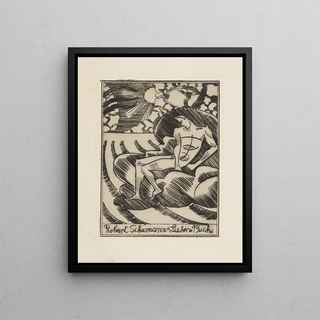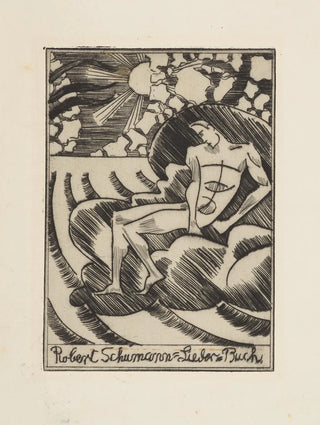Art print | Robert Schumann Song Book - August Babberger


View from behind

Frame (optional)
In the vast world of art, some works transcend their era and become timeless witnesses to human emotion. The art print of the "L Livre de chansons de Robert Schumann" by August Babberger fits into this tradition. This piece, much more than a simple illustration, evokes the melody of feelings, capturing the very essence of romantic music. Schumann, an emblematic composer of the 19th century, was able, through his compositions, to express the nuances of passion, dreams, and melancholy. Babberger, as an artist, beautifully translated these emotions into images, creating a work that resonates deeply with the artist's soul.
Style and uniqueness of the work
August Babberger's style is distinguished by his ability to fuse visual art with music, offering a unique sensory experience. In his art print of the "L Livre de chansons", every detail is carefully considered, from delicate colors to evocative shapes. Babberger plays with light and shadow, creating an atmosphere that invites contemplation. Floral motifs and decorative elements, typical of romanticism, are harmoniously integrated, strengthening the link between Schumann's music and visual aesthetics. This work is not just a simple representation; it becomes an invitation to immerse oneself in the musical universe, to feel the vibrations of each note through the prism of art.
The artist and his influence
August Babberger, although less known than some of his contemporaries, has left an indelible mark on the art world. His passion for music and his artistic talent allowed him to create works that celebrate harmony between sounds and visuals. Babberger drew inspiration from great masters while developing a personal style that is uniquely his own. His influence is felt not only in his own creations but also among other artists seeking to capture the essence of music through visual forms. Rediscovering works such as the "L Book of Songs of Robert Schumann" reveals how much art can be a vector of emotions, a universal means of communication that transcends barriers of

Matte finish

View from behind

Frame (optional)
In the vast world of art, some works transcend their era and become timeless witnesses to human emotion. The art print of the "L Livre de chansons de Robert Schumann" by August Babberger fits into this tradition. This piece, much more than a simple illustration, evokes the melody of feelings, capturing the very essence of romantic music. Schumann, an emblematic composer of the 19th century, was able, through his compositions, to express the nuances of passion, dreams, and melancholy. Babberger, as an artist, beautifully translated these emotions into images, creating a work that resonates deeply with the artist's soul.
Style and uniqueness of the work
August Babberger's style is distinguished by his ability to fuse visual art with music, offering a unique sensory experience. In his art print of the "L Livre de chansons", every detail is carefully considered, from delicate colors to evocative shapes. Babberger plays with light and shadow, creating an atmosphere that invites contemplation. Floral motifs and decorative elements, typical of romanticism, are harmoniously integrated, strengthening the link between Schumann's music and visual aesthetics. This work is not just a simple representation; it becomes an invitation to immerse oneself in the musical universe, to feel the vibrations of each note through the prism of art.
The artist and his influence
August Babberger, although less known than some of his contemporaries, has left an indelible mark on the art world. His passion for music and his artistic talent allowed him to create works that celebrate harmony between sounds and visuals. Babberger drew inspiration from great masters while developing a personal style that is uniquely his own. His influence is felt not only in his own creations but also among other artists seeking to capture the essence of music through visual forms. Rediscovering works such as the "L Book of Songs of Robert Schumann" reveals how much art can be a vector of emotions, a universal means of communication that transcends barriers of






